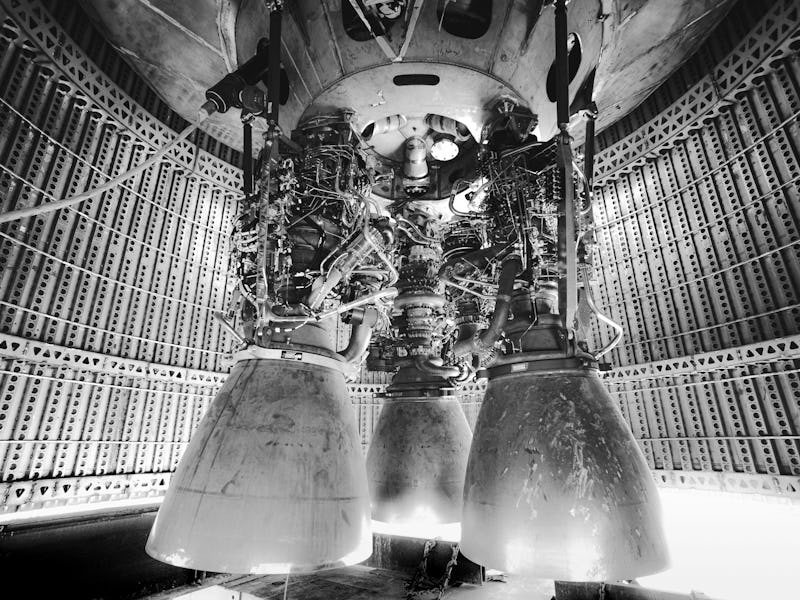
Elon Musk’s rocket is coming to life.
On Thursday, the SpaceX CEO shared images from the underside of the Starship Mk.1, the first full-size prototype of the ship designed to send the first humans to Mars and beyond. Pictured underneath are the three Raptor engines, the systems powered by liquid oxygen and methane designed for easy refueling on distant worlds.
The images come toward the end of a rapid development process for the Starship. Musk is expected to provide an update on the Starship at an event on September 28 at the Boca Chica facility in Texas. The event is expected to show the prototype in full, explain more about plans like refueling, and provide more details about missions like the inter-Earth transport service.
Through these black-and-white images shared on Twitter, Musk gave fans a dramatic sneak peek at the engines that could transform humanity into a multi-planetary species.
Up close and personal.
SpaceX Starship: The Raptor up close
At the heart of the Starship project is the Raptor. SpaceX’s previous rockets, like the Falcon 9 and Falcon Heavy, used the Merlin engine powered by rocket propellant. The Raptor is instead powered by liquid oxygen and methane, which means that using a variety of tech tricks like carbon capture, astronauts should be able to create more fuel with Mars’ atmosphere. It could even help SpaceX reach zero carbon emissions.
The Raptor engine was first announced back in 2009. Musk detailed the design for the Starship, then known as the BFR, at the International Astronautical Congress in Adelaide, Australia, back in September 2017. At the time, the sea-level Raptor engines were expected to produce a thrust of 1,700 kilonewtons with a specific impulse of 330 seconds at sea level, rising to 356 seconds in vacuum, and an exit diameter of 1.3 meters.
Fans on Twitter noted that the nozzle in the Starship prototype’s engine design looks pretty thin. It’s in stark comparison to the Space Shuttle, which wrapped around the nozzle with elaborate pipes.
“Raptor uses milled copper channels with an inconel jacket all the way down,” Musk explained.
A peek at the inside.
The rocket has changed dramatically since the 2017 event, notably switching in late 2018 to a stainless steel design. Musk noted earlier this week that the Mk.1 Starship has a mass in the region of 200 tons dry and 1,400 tons wet. The goal is to reach 120 tons by the fourth or fifth version. When the maximum payload is on board, the total mass is expected to reach 5,000 tons.
While the whole Mk.1 stack measures 164 feet, this is just the ship component. The first-stage booster, known as Super Heavy, is expected to bring the total height to nearly 400 feet.
Each ship will pack a large number of Raptor engines. Although the Mk.1 uses only three engines, the final design could include as many as six. That’s not including the extra engines on Super Heavy, which could bring the total number to somewhere around 40. Musk may provide more specific details around this and more at the event.
Ready for action.
SpaceX needs a large number of Raptor engines if it wants to produce several Starships to power its future missions — perhaps little wonder that Musk said in June he wants to ramp up Raptor production to one every 12 hours by the end of the year.
From here, SpaceX could fly the prototype as early as next month. SpaceX has ambitious plans for the final version, like a telecoms satellite in 2021, a manned trip around the moon in 2023, and a city on Mars by 2050.